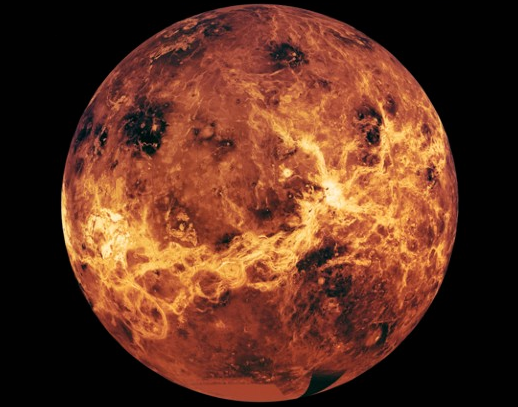
Are We Finally Redrawing the Habitable Zone?
Wait, What?! Alien Planets Smell Like Rotten Eggs?
Picture this: You’re floating in space, staring at a beautiful exoplanet orbiting a dim red star. It’s rocky, about the size of Earth, and—if sci-fi movies have taught us anything—it must be teeming with extraterrestrial life, right?
Not so fast. Before you start packing for your interstellar adventure, astronomers have sniffed out a clue that could separate truly habitable worlds from cosmic wastelands. And that clue? Sulfur dioxide (SO₂)—yes, the same stinky gas that makes rotten eggs and volcanic eruptions smell awful.
In an exciting new study, scientists suggest that the presence (or absence) of sulfur dioxide in an exoplanet’s atmosphere could redefine our understanding of habitable worlds—especially those orbiting small, dim stars called M-dwarfs. Let’s dive into why sulfur might be the key to unlocking the secrets of alien habitability.
The Goldilocks Zone: Not Too Hot, Not Too Cold… But Just Right?
For decades, scientists have searched for Earth-like planets using one big rule: Follow the water. They focus on planets in the habitable zone—the sweet spot where a planet is far enough from its star to avoid boiling but close enough to keep liquid water from freezing.
But here’s the catch: Just because a planet sits in the habitable zone doesn’t mean it’s actually habitable.
Take Venus and Earth, for example. Both are in the Sun’s habitable zone. Yet, Venus is a blistering, bone-dry inferno, while Earth is a cozy blue paradise. So, how do we tell habitable planets apart from their unlivable doppelgängers?
That’s where sulfur comes in.
Sulfur: The Cosmic Detective for Water-Less Worlds
When an Earth-like planet loses all its water, the atmosphere changes drastically. Instead of a steamy, ocean-friendly climate, it becomes a Venus-like hellscape, filled with CO₂ and sulfur-based gases.
The study suggests that if we detect SO₂ in an exoplanet’s atmosphere, it’s a clear sign that the planet has lost its oceans and is no longer habitable. This is because on planets with water, SO₂ gets washed out by rain and trapped in the oceans. But on bone-dry planets like Venus, SO₂ builds up, turning the sky into a toxic, suffocating haze.
Here’s where things get even more interesting: M-dwarf stars, the most common type of star in the universe, emit just the right kind of light to make this sulfur signal easier to detect.
Translation? We’re on the verge of being able to map the inner edge of the habitable zone based on sulfur detections.
The James Webb Space Telescope: Sniffing Out Alien Air
Right now, astronomers are gearing up to use the James Webb Space Telescope (JWST) to analyze exoplanet atmospheres. If JWST detects a strong sulfur signal, it could mean we’re looking at a dead, waterless world. But if the sulfur is missing? That planet might still be hanging onto its oceans—and possibly even life.
Think of it like this: If you’re walking into a bakery, you expect to smell fresh bread. If you don’t smell anything, either the bakery is closed, or you walked into a hardware store instead. Sulfur is like the “wrong smell” for a planet that should have water—it tells us something is off.
What This Means for the Hunt for Alien Life
This discovery could completely change how we search for habitable planets. Instead of just looking for water-friendly conditions, we can now actively rule out planets that have already dried up—saving astronomers from wasting time on worlds that can never support life.
Here’s why this matters:
- Better Target Selection: Instead of blindly guessing which planets to study, scientists can prioritize planets that lack sulfur signals—boosting our chances of finding life-friendly environments.
- More Precise Habitability Maps: By charting where sulfur-filled planets appear, we can redraw the boundaries of the habitable zone—getting a more accurate picture of where life could exist.
- A New Era of Space Exploration: This method could help us narrow down targets for future interstellar missions, whether robotic probes or (eventually) human explorers.
In short, sulfur detection could be a game-changer for astrobiology.
So… Are We Alone?
This research doesn’t tell us whether aliens exist. But it does give us a powerful new tool to find places where life might exist.
Think about it—our own planet might never have been habitable if its early history had gone just a little differently. Could there be planets out there that barely escaped becoming Venuses? Or others that are just on the brink of becoming Earths?
With the James Webb Space Telescope and other upcoming observatories, we’re about to start answering some of the biggest questions in science. And sulfur, of all things, might be the key to unlocking the truth.
Let’s Explore Together!
What do you think? If we find a planet just like Earth but with a faint sulfur signature, should we send a probe? Would you move to another planet if we discovered it was habitable?
Drop your thoughts in the comments, share this with your fellow space geeks, and let’s talk about what the future of exoplanet exploration might hold!
🔭 Want more mind-blowing space discoveries? Subscribe to our newsletter and never miss a cosmic update!



